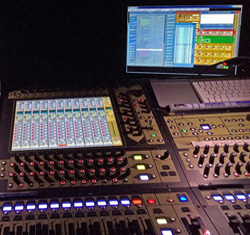As more churches put their entire services online, the need for a quality broadcast audio mix becomes more critical.
By “broadcast,” I’m referring to a mix that leaves the building, whether by actual broadcast or internet delivery. It could also be the same mix sent to the lobby, overflow rooms and other areas.
Why not use the main mix? While it’s technically possible to just take the L/R mix from the console and send it to video, the result usually isn’t ideal. This is true for several reasons.
The first – and biggest – issue is dynamic range. In a typical modern service, you’re likely to have 30-plus dB of dynamic range in the room. That sounds great – in the room. But on a laptop or in a cry room, people will be reaching for the volume control. A lot.
The second issue is the contribution of ambient sounds. There may not be a lot of drums in the main mix because they’re are already pretty loud in the room. (I hate seeing a video shot of the drummer when I don’t hear any drums.) The same may be true for guitars. Smaller rooms are more prone to this problem, but it’s an issue for everyone at some level.
Finally, the main L/R mix doesn’t have much, if any, ambience in it. Without some sense of what is going on in the room, the mix will feel dead. We’re not capturing sound in a studio; we’re in a live worship setting. Thus we need to hear people worshiping.
There are several ways to arrive at a good broadcast mix.
Use The House
This is the easiest approach, but for the reasons mentioned above, it’s also the least effective way to do it. Some house microphones could be fed to a matrix to add some ambience, but that means a lot of the aforementioned dynamic range. Subsequently running it through a compressor will likely make the music feel squashed. There are leveling products available and they work “OK,” but there really are better ways to go about it.
Dedicated Console
Some would argue this is the best way to get it done. A separate console is set up in another room with access to all the inputs from stage. A split – either analog or digital – provides all of the inputs the house console sees. An operator mixes these together with complete freedom with processing, mixing and effects.
Stems are an alternative when a full split and large broadcast console aren’t in the budget. The broadcast position might get a set of mono or stereo mixes: drums, guitars, keyboards, vocals, speaking mics, playback channels, etc. The broadcast engineer mixes and level-balances these stems while adding in some house mics. It’s a good way to go, though it does eat up groups or auxes on the house console.
The downside is that another console is still needed, as well as a room and an operator. For some churches, staffing another mix position is tough to do. But there is another approach.





















